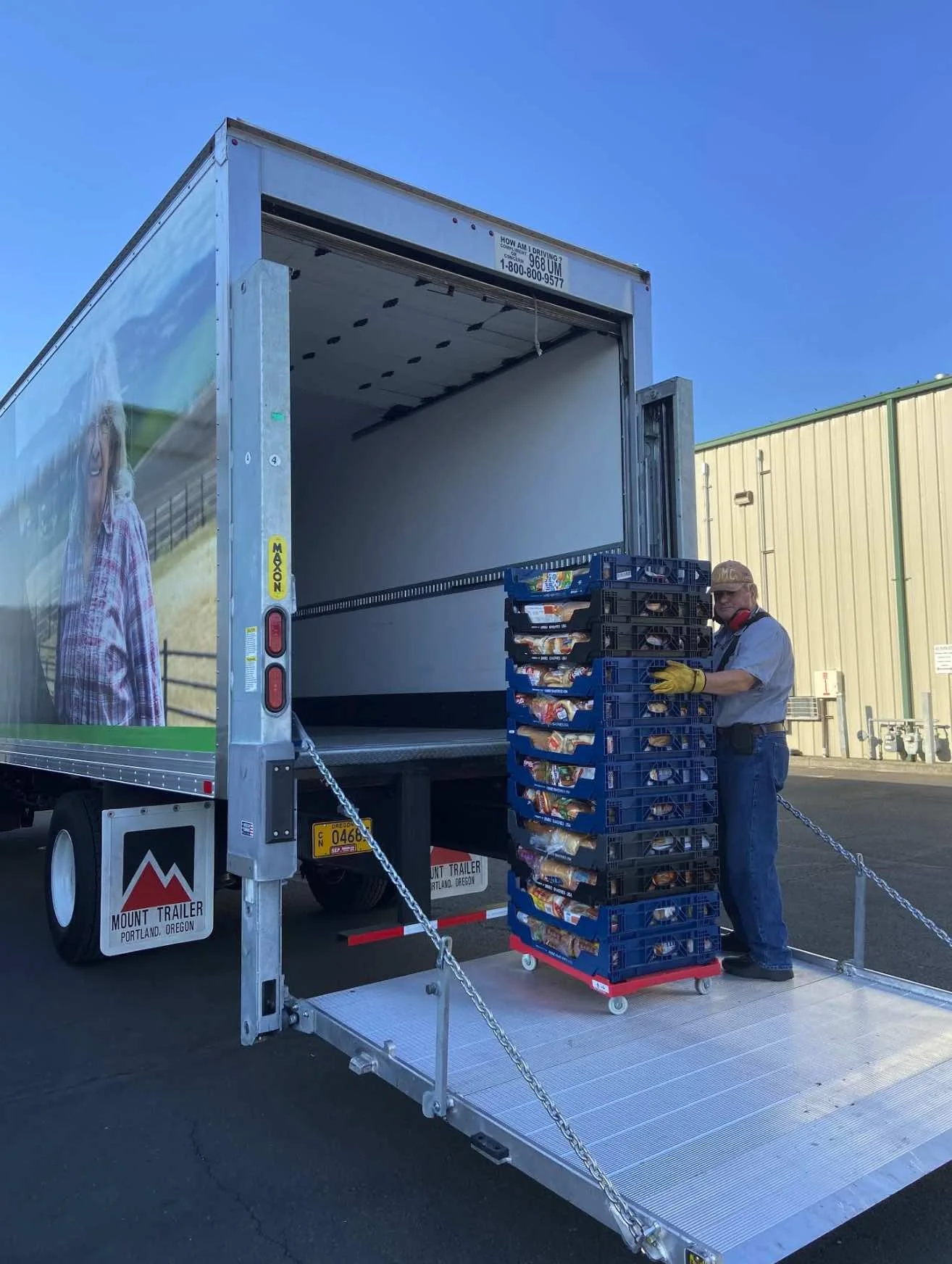Helping orchardists with Integrated Pest Management
In the Columbia River Gorge, alternatives to chemical insecticides are being used in the battle against pests
Alt control: A new program is testing wasps and moths to combat pests like this fruit fly laying an egg on a sweet cherry. Photo: Christophe Adams
This article has been republished from Columbia Insight and was originally published on September 1st, 2022.
By Eli Francovich
Each week for the past three months Christopher Adams, a professor at Oregon State University, has released upward of 4,000 codling moths into the Columbia Gorge’s fertile orchards.
The drab, half-inch nonnative insects don’t look like much, but when they lay their larvae inside apples, pears, walnuts or other crops, they wreak havoc.
According to one 2018 analysis they cost Washington apple growers more than half-a-billion dollars in damages.
And that’s exactly why Adams has released the moths.
Each moth he’s let into the wild has been sterilized.
“These sterilized male and females fly around and mate with any wild (moths),” Adams says. “Because they are sterilized you don’t get any offspring.”
Adams is an assistant professor of tree fruit bugology at Oregon State University’s Hood River extension.
His summer release of sterilized moths is just one of several ongoing research projects he’s directing, all under the broad umbrella of an agricultural technique known as Integrated Pest Management.
Hood River orchardists “way ahead”
More a strategy than specific tool, Integrated Pest Management (IPM) focuses on a stable of techniques, in addition to pesticides, to control pest populations. These include the introduction of natural predators, habitat modification and genetic tinkering.
Orchardists and farmers in the Hood River area are “way ahead of most other regions” when it comes to these sorts of interventions, Adams says.
The sterilized moth release from this summer is modeled after a long-standing project in British Columbia.
Fruit cops: Shown on a penny, Trissolcus japonicus (left) is an egg parasitoid of the brown marmorated stinkbug. Ganaspis brasiliensis (right) attacks the larvae of spotted wing drosophila (fruit fly), a major pest of soft-skinned berries such as cherries, blueberries, strawberries and raspberries. Photo: Christopher Adams
The Okanagan-Kootenay Sterile Insect Release Program has sterilized and released codling moths into the Okanogan Valley area since 1992. That’s led to a 94% reduction in the moth population, which in turn has reduced the quantity of pesticides deployed by 96%.
The Okanagan-Kootenay rearing facility is the only one in the world, Adams says.
His rather modest introductions this summer aim to prove that a similar program could work in the Columbia Gorge area.
And while early, Adams hopes to build a Columbia Gorge rearing facility in the future, one that instead of using radioactive cobalt would use X-rays to sterilize moths.
While the original goal of the B.C. project was eradication, Adams says that it proved untenable.
“Eradication is a difficult thing with insects,” he says. “They are so good at surviving. If you have an apple tree in your backyard, that’s enough. You can be harboring the last remaining population.”
“Playing God” with nature
Other projects Adams has worked on this summer include the introduction of a tiny wasp, Trissolcus japonicas or “samurai wasp,” which lays its eggs in the brown marmorated stinkbug’s eggs.
The stinkbug is a nonnative species from Asia that, like the Codling moth, can destroy crops.
While the stinkbug has no predators in North America, the samurai wasp is native to the stinkbug’s home. The wasp is already present in the United States, and Oregon.
Scrambled eggs: This samurai wasp will lay her eggs in the invasive stinkbug’s eggs. Wasps will hatch instead of stinkbugs. Photo: Christopher Adams
This year Adams released nearly 20,000 of the 1- to 2-millimeter-long wasps.
“In their native range they provide 80-90% control of this stinkbug,” he says.
Most orchardists, he says, are happy to use non-pesticidal controls, particularly because all insects eventually become resistant to pesticides.
Playing God with natural systems can be a risky game, and there have been high-profile and devastating examples of experimental pest management going awry. None more so than the introduction of Cane toads into Australia in 1935.
The toads, native to South America, were brought to control the Cane beetle population. However, the voracious and poisonous amphibians mostly ignored the beetles, instead decimating other native species while reproducing like rabbits.
Currently there are an estimated 200 million Cane toads in Australia.
That epic failure is burned into researchers’ and managers’ minds, Adams says, and now any ecological tinkering goes through multiple levels of scientific and political review.
“I don’t think we’re at that cavalier stage,” he says. “If I could equate it to being an 18-year-old and thinking we’re 10 feet tall and bulletproof, as a scientific community we’re beyond that. There is a huge process in place for making decisions. No one person decides if it’s OK to release anything.”
Eli Francovich is a journalist covering conservation and recreation. Based in eastern Washington his book about the return of wolves to the western United States will be published in April 2023.
RELATED: Poisoned ground: Dealing with Washington’s legacy of pesticides
RELATED: Climate change is imperiling the future of U-pick farms
Support Local News
Without media reporting on important local issues and happenings in the Mid-Columbia region, we lose government accountability, we miss out on positive local reflections, important notices, and much more. Help keep us writing and reporting.

